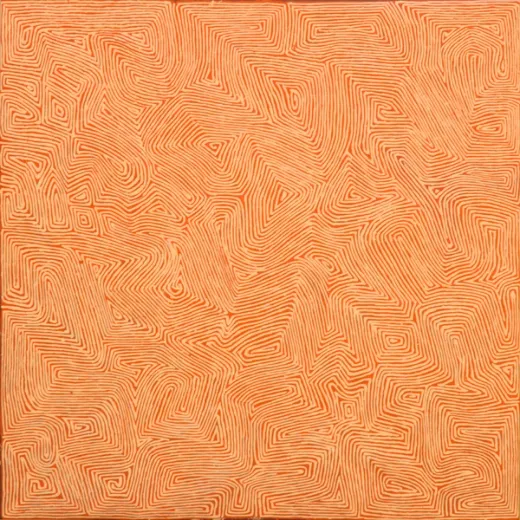George Tjungurrayi
b.1943 near Kiwirrkura, Australia. Lives and works in Kintore, Australia.
George Tjungurrayi has been creating paintings using linear patterns since the 1990s. His abstract canvases, demonstrating the distinctive painting style of Papunya Tula Artists of the Western Desert, are often interpreted as reflections of the desert landscape. The shapes and lines can be read as representations of waterholes and the ripple marks on the sand caused by the wind. When considered in a Western art-historical context, the optical effects created by colliding colours are reminiscent of Minimalism and Op Art. For Tjungurrayi, the characteristic patterns are also a reference to the invisible energy fields of his ancestral country and traditional stories deeply rooted in sacred law.
Born near Kiwirrkura in a remote part of the Gibson Desert in Western Australia, Tjungurrayi came in from the desert by way of Mount Doreen and Yuendumu in the early 1970s and started painting at West Camp at Papunya with Papunya Tula Artists in 1976. Adapting traditional Tingari style, Tjungurrayi began exploring the abstract use of optical stripes for which he is now recognised.
